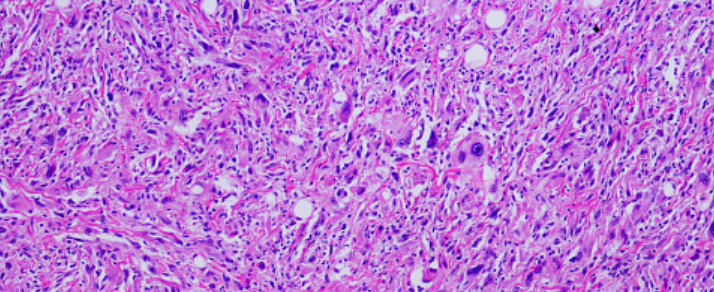Photo Credit: OGphoto
The following is a summary of “Clinical course and prognostic factors of patients with dedifferentiated liposarcoma: a retrospective analysis,” published in the March 2025 issue of the BMC Cancer by Casier et al.
Dedifferentiated liposarcoma (DDLPS) is a relatively common subtype of soft tissue sarcoma, yet its clinical course and prognostic determinants remain poorly characterized. This study retrospectively analyzed patients diagnosed with DDLPS at the University Hospital Leuven, Belgium, between 1991 and 2022, utilizing an established clinical database and patient records to assess treatment outcomes, recurrence patterns, and survival metrics. A total of 259 patients were identified, with the retroperitoneum being the most frequent primary tumor site (47.5%). Among them, 204 patients (78.8%) underwent primary surgical resection, while radiotherapy was administered preoperatively in 17.8% (46/259) and postoperatively in 19.7% (51/259). At initial diagnosis, 10.8% (28/259) of patients presented with locally inoperable disease, and 10.0% (26/259) had synchronous metastases.
Among those who underwent primary surgery, local recurrence occurred in 44.0% (114/259) of cases, while 30.9% (80/259) developed metachronous metastases, with 18.5% (48/259) experiencing both local relapse and distant metastases. Patients with inoperable or metastatic disease were frequently treated with systemic therapy, with doxorubicin (52.0%) being the most common first-line treatment, followed by doxorubicin with ifosfamide (12.2%) and experimental therapies (18.4%). Survival analysis demonstrated a median OS of 70.5 months (95% CI: 56.6–98.6) for all patients. However, patients with inoperable disease had a markedly reduced OS of 10.9 months (95% CI: 3.6–29.2), while those with local recurrence had a median OS of 28.4 months (95% CI: 1.3–199.3). Notably, patients with metastatic disease had the worst prognosis, with a median OS of only 9.4 months (95% CI: 1.2–25.9).
Multivariate analysis identified younger age, primary surgical resection, absence of synchronous metastases, absence of local recurrence, and treatment with experimental therapies as significant prognostic factors associated with improved survival. Overall, DDLPS exhibits an aggressive disease trajectory, particularly in cases of inoperable or metastatic disease, where conventional chemotherapy yields limited efficacy. Given the poor response to standard systemic treatments, experimental therapies may represent a more viable option for select patients. These findings underscore the urgent need for novel therapeutic strategies and provide critical data that can inform the design of future prospective clinical trials aimed at improving outcomes for patients with DDLPS.
Source: bmccancer.biomedcentral.com/articles/10.1186/s12885-025-13813-w














Create Post
Twitter/X Preview
Logout